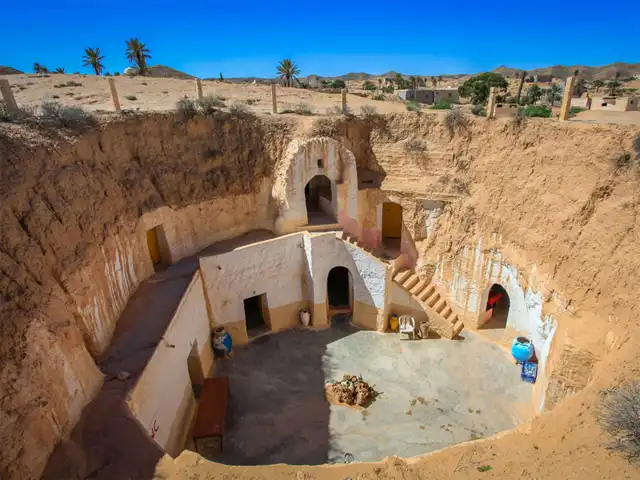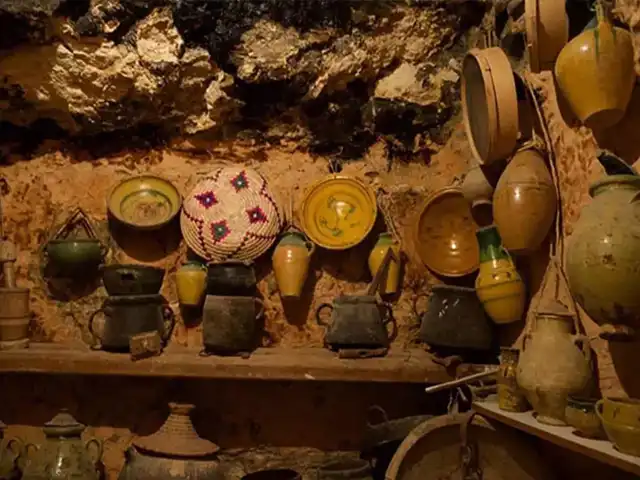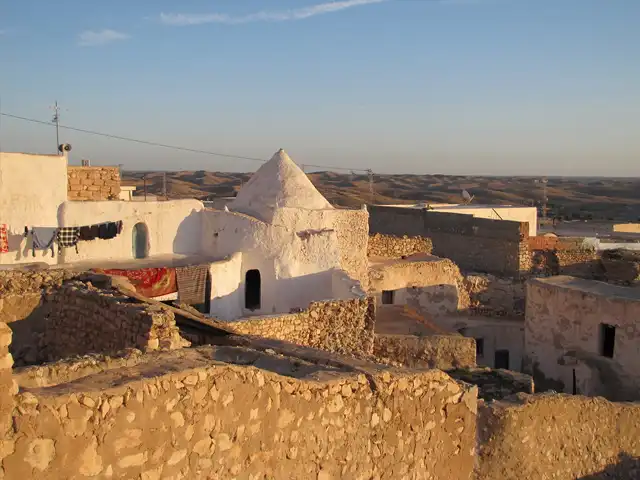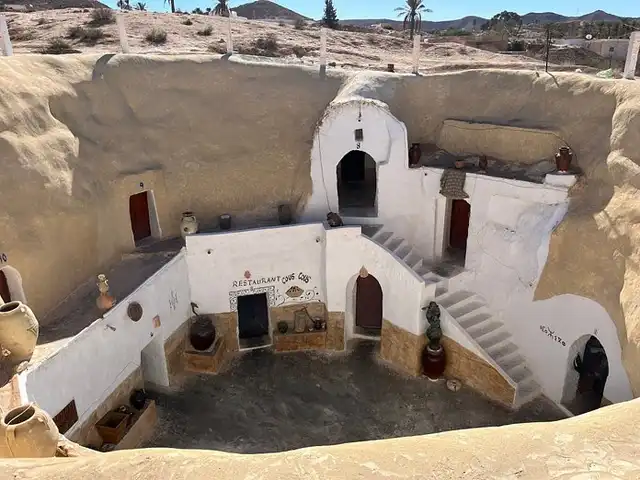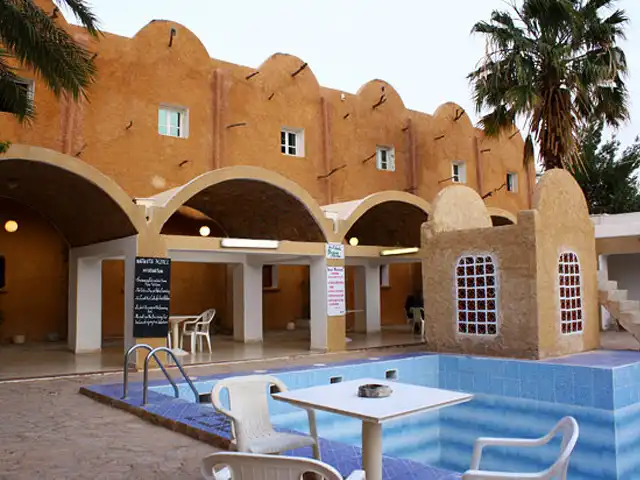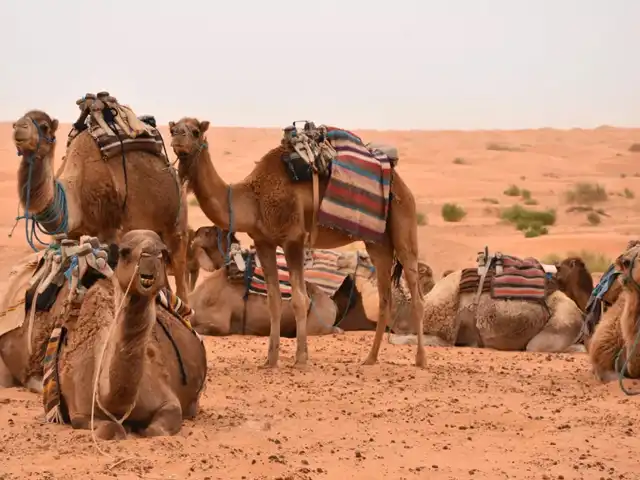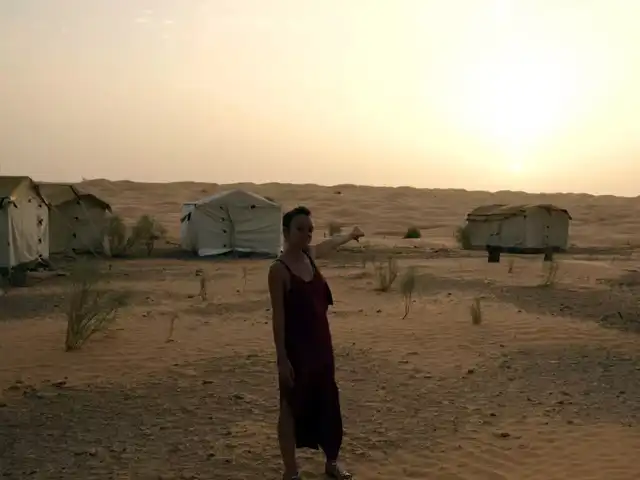Matmata
Le village troglodyte
The village of Matmata, nestled in the rugged mountains of southern Tunisia within the Gabès governorate, stands out for its extraordinary troglodyte architecture. This ancient settlement, perched 600 meters above sea level, showcases a unique adaptation to the harsh desert climate. Carved into the mountainside, these subterranean homes are designed to stay cool during the scorching summer and relatively warm in winter, thanks to their clever construction around a central courtyard.
Matmata’s history enriches its allure. Founded by the Berber Matmata tribe as a refuge from the Hilalian invasions, the village’s name is a nod to its heritage. Although much of the population has relocated to New Matmata due to modern development, the original village remains a vivid symbol of traditional Berber culture.
Adding to Matmata’s fame is the Sidi Driss hotel, which gained international attention as the filming location for George Lucas’s Star Wars. This troglodyte home, featured as the Lars family residence in the film, perfectly illustrates the village’s unique architectural style. The hotel’s underground rooms and courtyards closely resemble the movie set, attracting visitors from around the world who are eager to experience a piece of cinematic history.
Visitors to Matmata find themselves immersed in an otherworldly landscape that captures the imagination. The village’s combination of ancient architecture and cinematic fame offers a fascinating glimpse into Tunisia’s cultural and architectural past. Exploring Matmata provides a memorable journey into the ingenious adaptations of the Berber people and their enduring legacy.
The village of Matmata in pictures
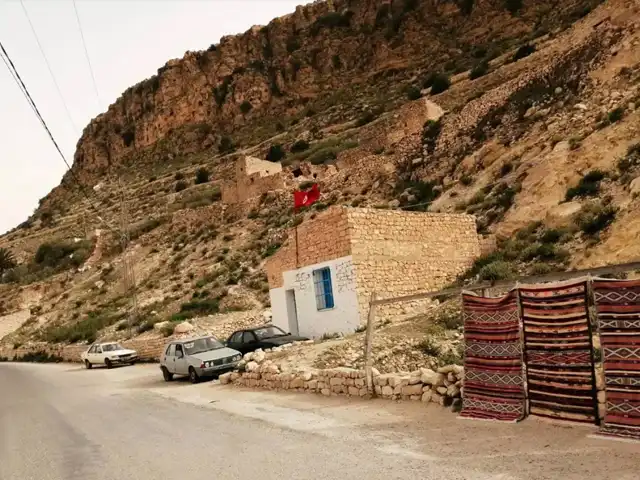
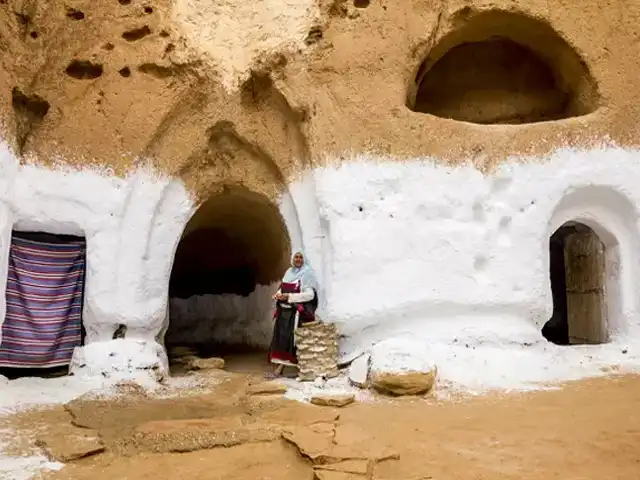
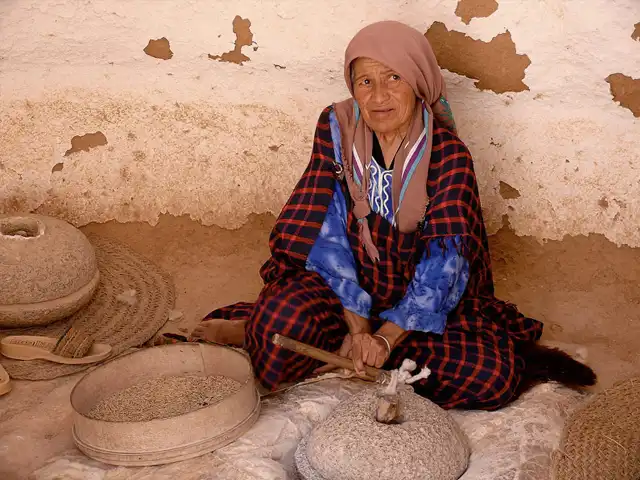

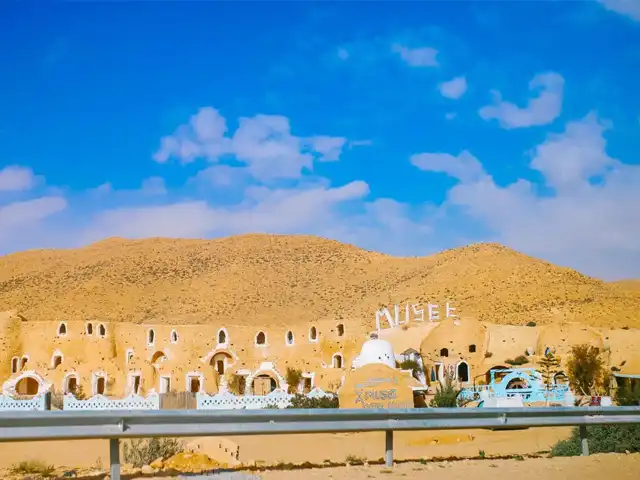
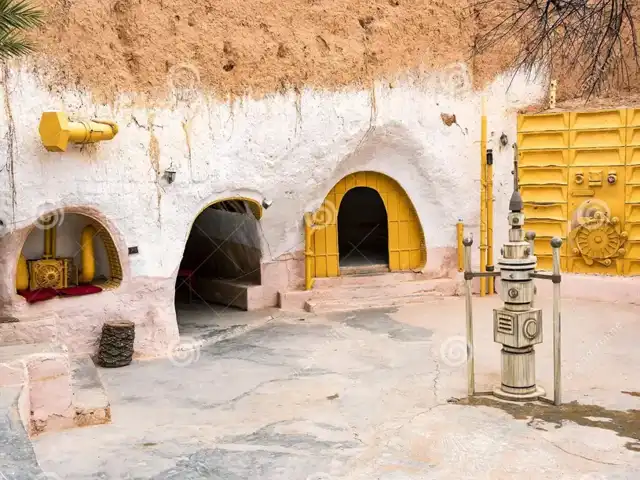
The village of Matmata in video
Top visits in Matmata
Matmata is the place where you won’t be bored! Between its troglodyte houses, its Berber villages and its museums we have enough for a week. Discover with us the essentials of Matmata.
Where to stay in Matmata
In Matmata the choice of accommodation is so vast that it can meet all needs and all tastes! Between hotels, guest houses and vacation rentals
